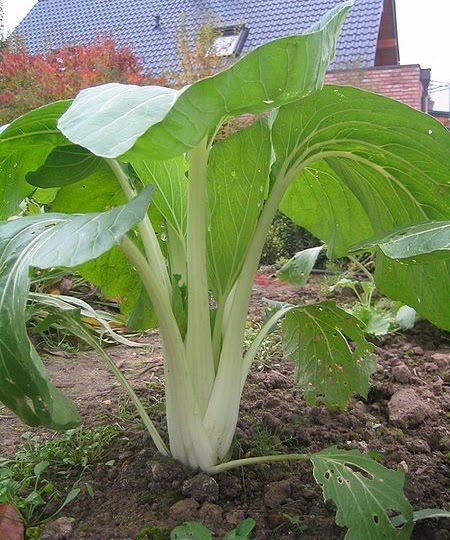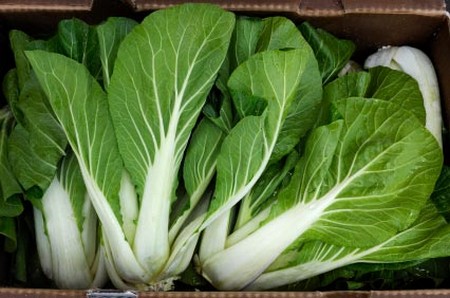Despite the popularity of Chinese food, oriental greens are not widely grown in the UK. This is unfortunate, as they are a quick, easy crop, and decorative enough for a small garden.
There are two main points to consider when growing these vegetables. First, they have a tendency to bolt if sown too early, but this is easily prevented by choosing improved varieties or by sowing later in the summer than European cabbages. A second potential problem is that oriental greens are prey to all the pests and diseases that affect other members of the cabbage family. So it is worth using a crop cover.
Like European cabbages, oriental greens require a very fertile, moisture-retentive soil, with a high nitrogen content. This is particularly important if you are using them as a follow-on crop from mid-summer onwards, to enrich the soil.

Calendar
March-May
Sow all types of oriental greens for a crop of loose leaves. (Chinese cabbages have rough seed leaves, which are not as good to eat as when they are larger.) The leaves can be cut at any stage, either as seedlings or as immature plants. Spring-sown plants are likely to bolt if left too long, though the flower shoots are also edible before the flowers open.
June
Most oriental greens are a useful follow-on crop after broad beans or peas have finished. Chinese cabbage will bolt if transplanted from a seedbed, so these and other kinds of oriental greens can be sown directly into their final position and thinned out later. However, it is more efficient to start the seed off in 7-cm pots, ready to follow an early crop. Keep them in partial shade and watch out for pests.
July
Keep the seedlings well watered until a space is ready in the vegetable plot, ornamental border or containers.
Earlier crops of peas or beans can be cut off at soil level and their roots left to nourish the greens. If you are not following on from a crop of peas or beans, then fork plenty of well-rotted manure or garden compost into the soil before planting. Give the soil a thorough soaking if it is dry, and scatter a generous amount of balanced fertilizer.
Chinese cabbage and larger types of oriental greens need a spacing of 30-38cm each way to produce heads. Pak choi can be planted as close as 23cm apart. Direct-sown crops can be
thinned to the spacings above, or to a closer spacing of 10-15cm apart for a crop of loose greens.
Cover the crop with insect-proof netting or be prepared to hand-pick or spray pests. Further sowings can be made throughout July, although they will need to be kept moist. Water the plants well and, if possible, apply a mulch of well-rotted organic matter to help keep the roots moist.
August
Make a final sowing of Chinese cabbage for an autumn crop. Mature heads from the earliest sowing should be ready to harvest.
September
Chinese cabbage and pak choi are not very frost-hardy, so cover later sowings with cloches or garden fleece. A late sowing in a greenhouse or polythene tunnel, which can be kept frost-free, should provide fresh greens all winter.
Komatsuna, mizuna, mustard ‘Green in Snow’ and rosette pak choi or ‘Tat Soi’ are the hardiest and may survive outdoors in mild areas.
Harvesting
Cut Chinese cabbage heads, leaving a stump – this should produce a flush of new leaves. Mature heads and older leaves are best steamed or used in stir-fries. Younger leaves, immature plants and seedlings of all oriental greens can be used as alternative salad ingredients.
